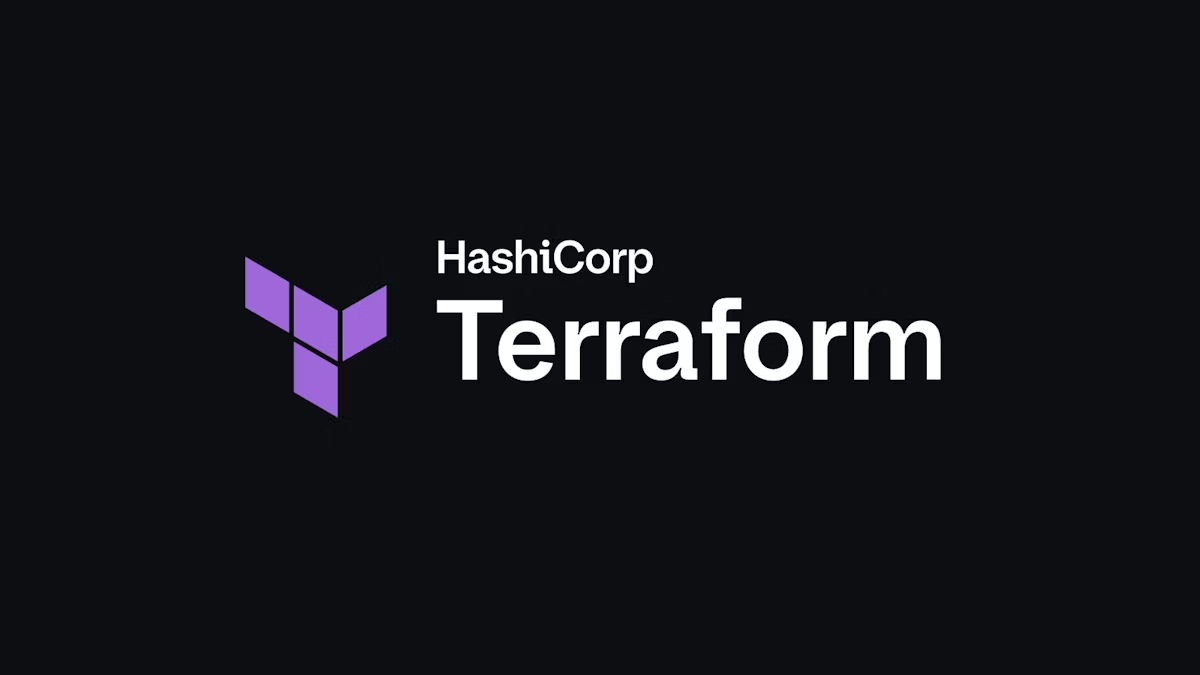Terraform commands are a set of powerful CLI tools used to manage infrastructure as code (IaC) efficiently. These commands allow users to define, preview, deploy, and maintain resources on various cloud platforms and service providers.

Terraform Commands
There are a couple of commands to check the Terraform’s built-in command-line documentation:
terraformterraform -hterraform --help
The resulting help page will have the main commands at the top, followed by the less common or more complex commands below.

We can also enter the terraform command and then a subcommand with -h or --help to pull up a list of commands that are specific to that subcommand.
Important Terraform commands:
fmt- When we finish our Terraform configuration, we can make sure that everything is formatted correctly.init- The init command looks at your configuration files and determines which providers and modules it needs to pull down from the registry to allow your configuration to work properly.validate- Validation will catch syntax errors, version errors, and other issues.plan- Next, it’s always a good idea to do a dry run of your plan to see what it’s actually going to do.apply- This is the command that deploys or applies your configuration to a provider.destroy- The destroy command, obviously, will destroy your infrastructureoutput- The output command to make those defined outputs to display certain information.show- The show command shows the current state of a saved plan.state- Another good way to check your work is to use the state command.version- We will use the version command quite a bit to check our Terraform version,
Logging in terraform
The environment variableTF_LOG defines the log level. Valid log levels are (in order of decreasing verbosity): TRACE, DEBUG, INFO, WARN or ERROR.
- Bash
- export TF_LOG="DEBUG"
- export TF_LOG_PATH="tmp/terraform.log"
- PowerShell
- $env:TF_LOG="DEBUG"
- $env:TF_LOG_PATH="C:\tmp\terraform.log"
To set them permanently, you can add these environment variables to your .profile, .bashrc, PowerShell profile (if it exists, the path is stored in $profile environment variable) file, or the appropriate profile for your chosen shell.
Terraform CLI tricks
terraform -install-autocomplete#Setup tab auto- completion, requires logging back in
Format and Validate Terraform code
terraform fmt- format code per HCL canonical standardterraform validate- validate code for syntaxterraform validate -backend=false- validate code skip backend validation
Initialize your Terraform working directory
terraform init- initialize directory, pull down providersterraform init -get-plugins=false- initialize directory, do not download pluginsterraform init -verify-plugins=false- initialize directory, do not verify plugins for Hashicorp signature
Plan, Deploy and Cleanup Infrastructure
terraform show- to inspect current state.terraform apply --auto-approve- apply changes without being prompted to enter “yes”terraform destroy --auto-approve- destroy/cleanup deployment without being prompted for “yes”terraform plan -out plan.out- output the deployment plan to plan.outterraform apply plan.out- use the plan.out plan file to deploy infrastructureterraform plan -destroy- outputs a destroy planterraform apply -target=aws\_instance.my\_ec2- only apply/deploy changes to the targeted resourceterraform apply -var my\_region\_variable=us-east-1- pass a variable via command-line while applying a configurationterraform apply -lock=true- lock the state file so it can’t be modified by any other Terraform apply or modification action(possible only where backend allows locking)terraform apply refresh=false- do not reconcile state file with real-world resources(helpful with large complex deployments for saving deployment time)terraform apply --parallelism=5- number of simultaneous resource operationsterraform refresh- reconcile the state in Terraform state file with real-world resourcesterraform providers- get information about providers used in current configuration
Terraform Workspaces
terraform workspace new mynewworkspace- create a new workspaceterraform workspace select default- change to the selected workspaceterraform workspace list- list out all workspacesterraform workspace- shows workspaces
Terraform State Manipulation
terraform.tfstate.backup- stores previous stateterraform.tfstate- stores current stateterraform state show [options] ADDRESS- shows the attributes of a single resourceterraform state show aws\_instance.my\_ec2- show details stored in Terraform state for the resourceterraform state pull > terraform.tfstate- download and output terraform state to a fileterraform state mv aws\_iam\_role.my\_ssm\_role module.custom\_module- move a resource tracked via state to different moduleterraform state replace-provider hashicorp/aws registry.custom.com/aws- replace an existing provider with anotherterraform state list- list out all the resources tracked via the current state fileterraform state rm aws\_instance.myinstace- unmanage a resource, delete it from Terraform state file
Terraform Import And Outputs
terraform import aws\_instance.new\_ec2\_instance i- abcd1234- import EC2 instance with id i-abcd1234 into the Terraform resource named “new_ec2_instance” of type “aws_instance”terraform import 'aws\_instance.new\_ec2\_instance[0]' i- abcd1234- same as above, imports a real-world resource into an instance of Terraform resourceterraform output- list all outputs as stated in codeterraform output instance\_public\_ip- list out a specific declared outputterraform output -json- list all outputs in JSON format
Terraform Miscelleneous commands
terraform version- display Terraform binary version, also warns if version is oldterraform get -update=true- download and update modules in the “root” module.
Terraform Console(Test out Terraform interpolations)
echo 'join(",",["foo","bar"])' | terraform console- echo an expression into terraform console and see its expected result as outputecho '1 + 5' | terraform console- Terraform console also has an interactive CLI just enter “terraform console”echo "aws\_instance.my\_ec2.public\_ip" | terraform console- display the Public IP against the “my_ec2” Terraform resource as seen in the Terraform state file
Terraform Graph(Dependency Graphing)
terraform graph | dot -Tpng > graph.png- produce a PNG diagrams showing relationship and dependencies between Terraform resource in your configuration/code
Terraform Taint/Untaint(mark/unmark resource for recreation - > delete and then recreate)
terraform taint aws\_instance.my\_ec2- taints resource to be recreated on next applyterraform untaint aws\_instance.my\_ec2- Remove taint from a resourceterraform force-unlock LOCK\_ID- forcefully unlock a locked state file, LOCK_ID provided when locking the State file beforehand
Terraform Cloud
terraform login- obtain and save API token for Terraform cloudterraform logout- Log out of Terraform Cloud, defaults to hostname app.terraform.io
Terraform variables precedence (low to high)
- terraform.tfvars
- terraform.tfvars.json
- *.auto.tfvars, *.auto.tfvars.json
- -var, -var-file